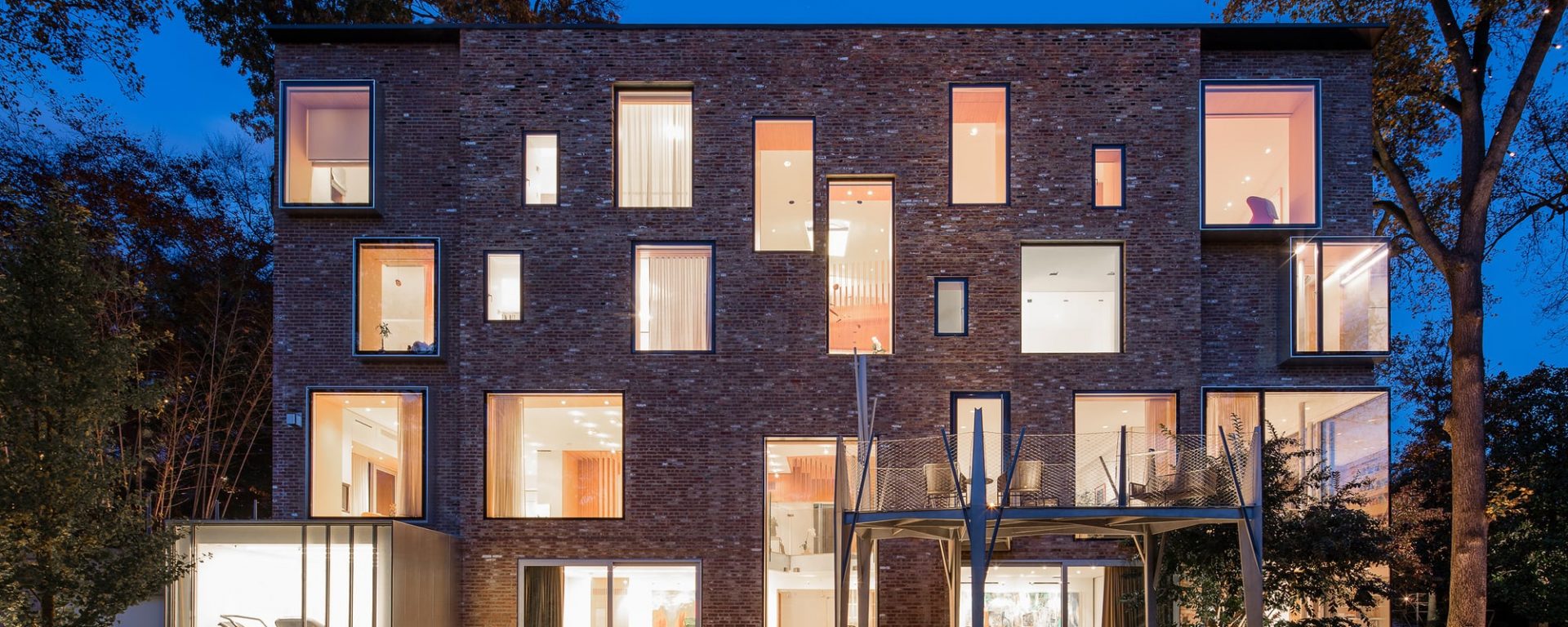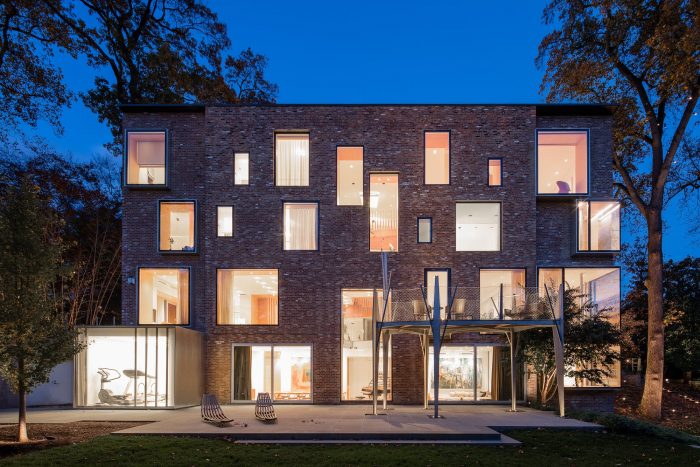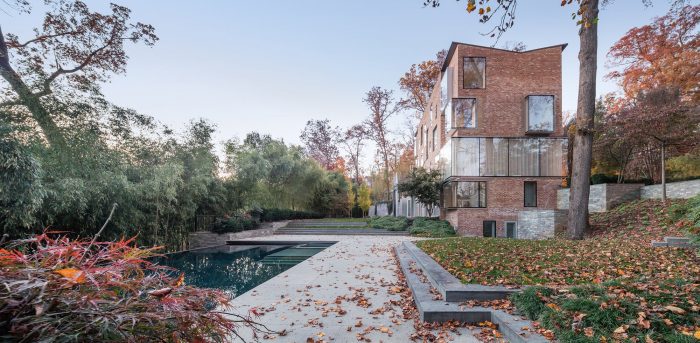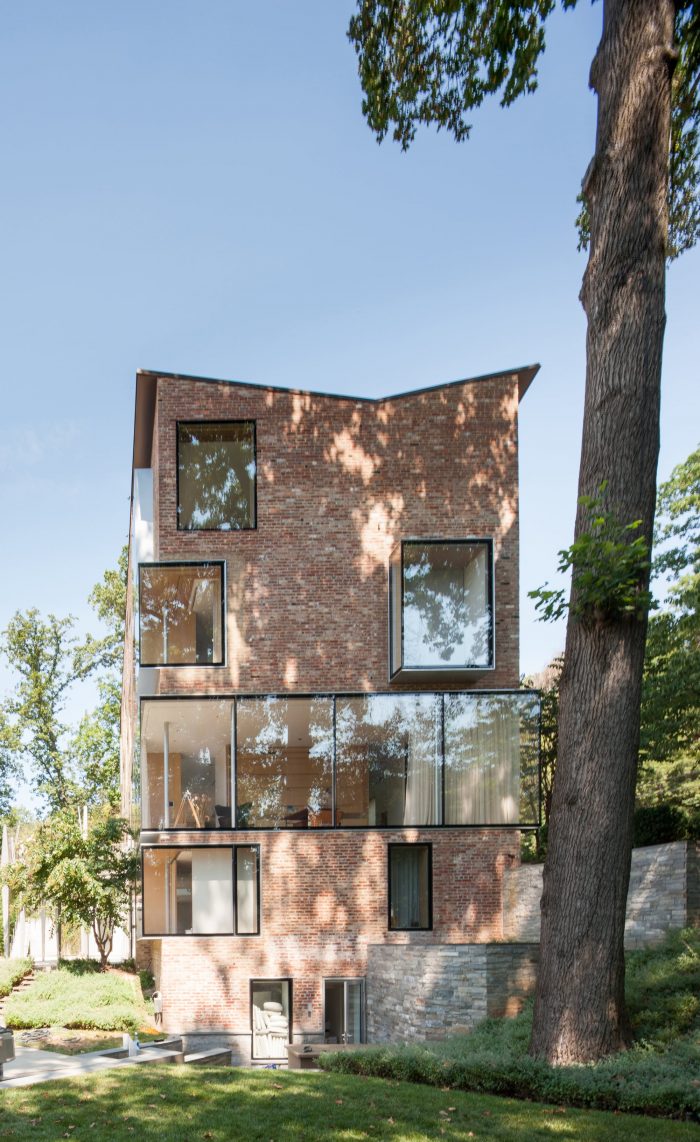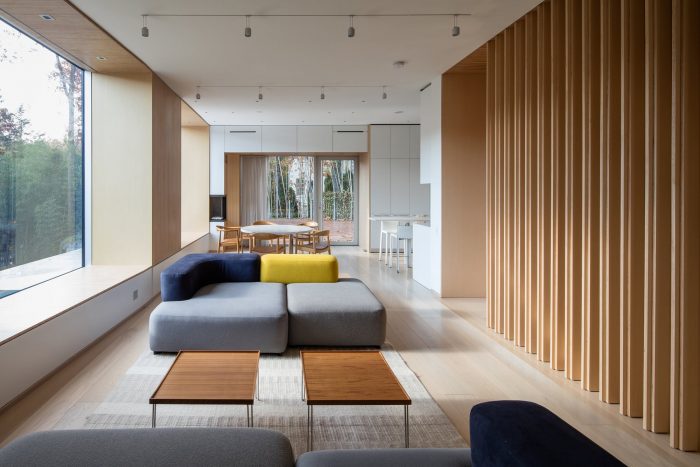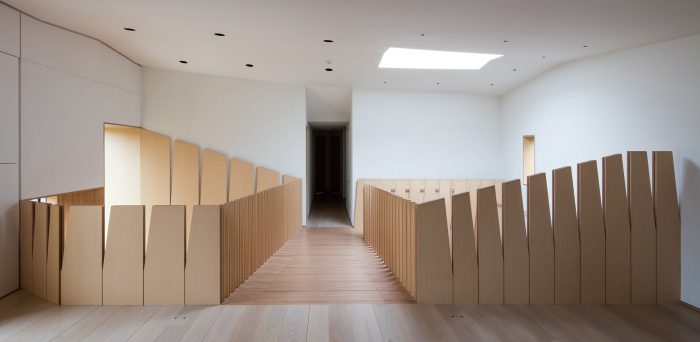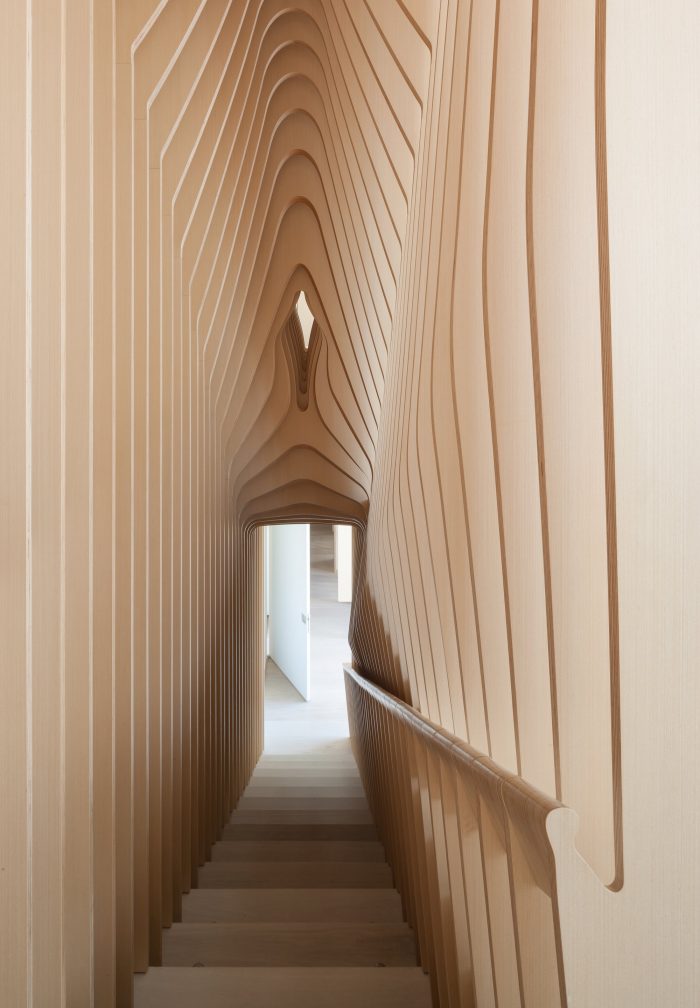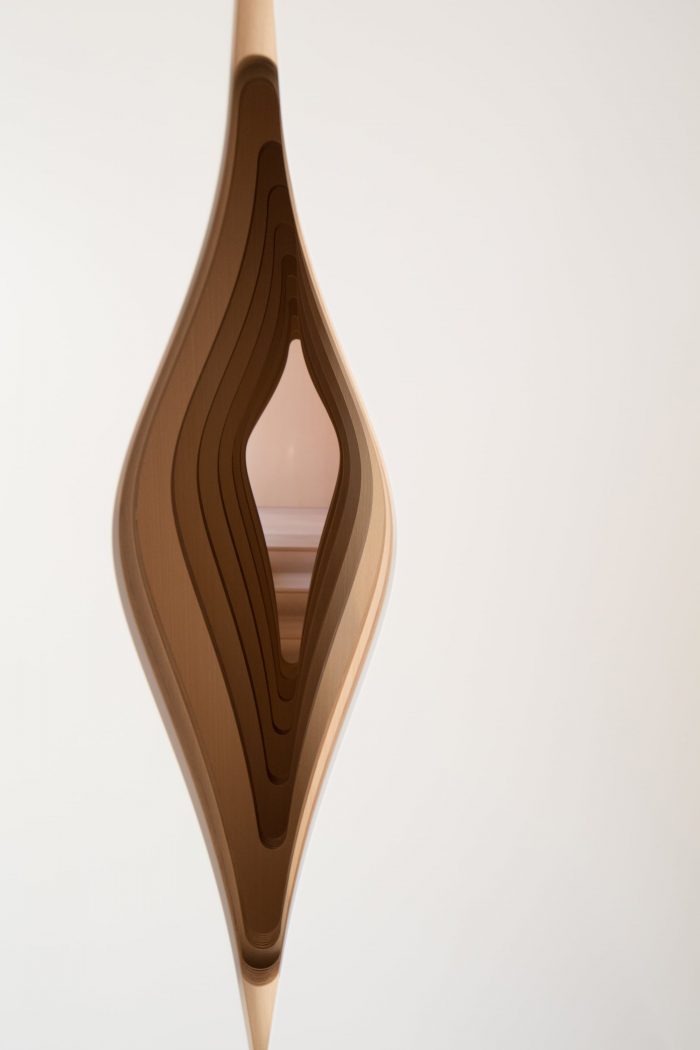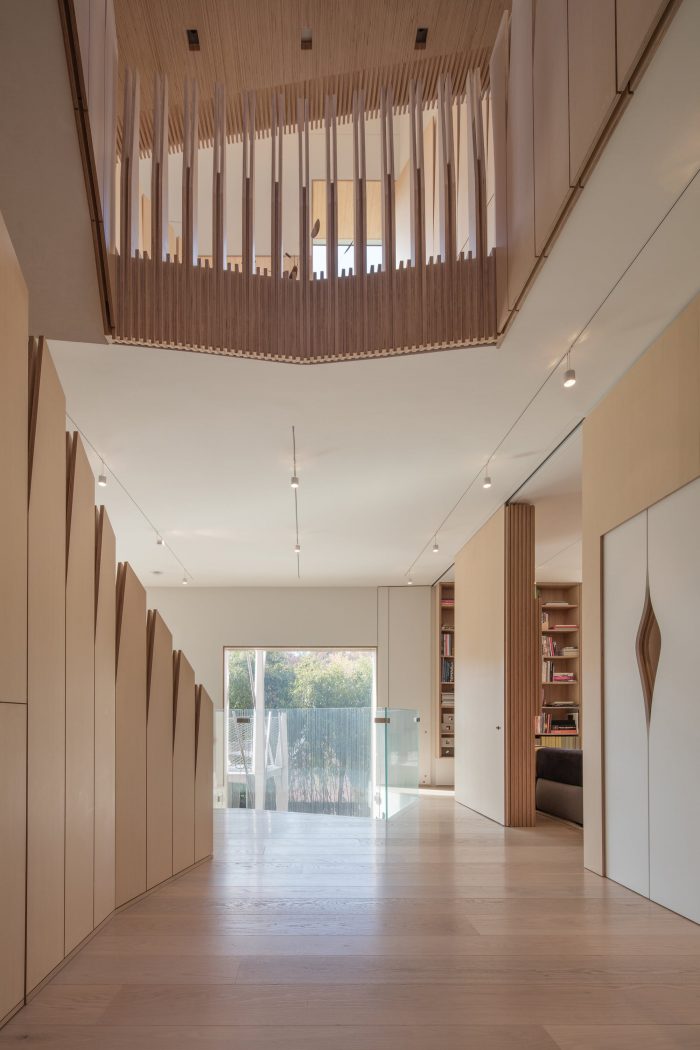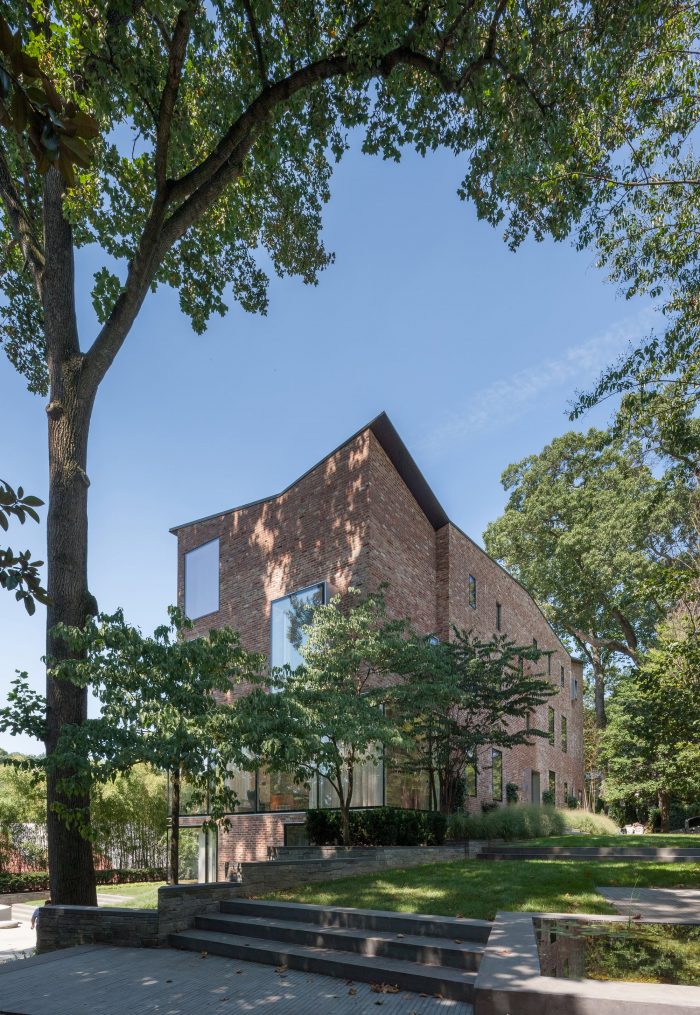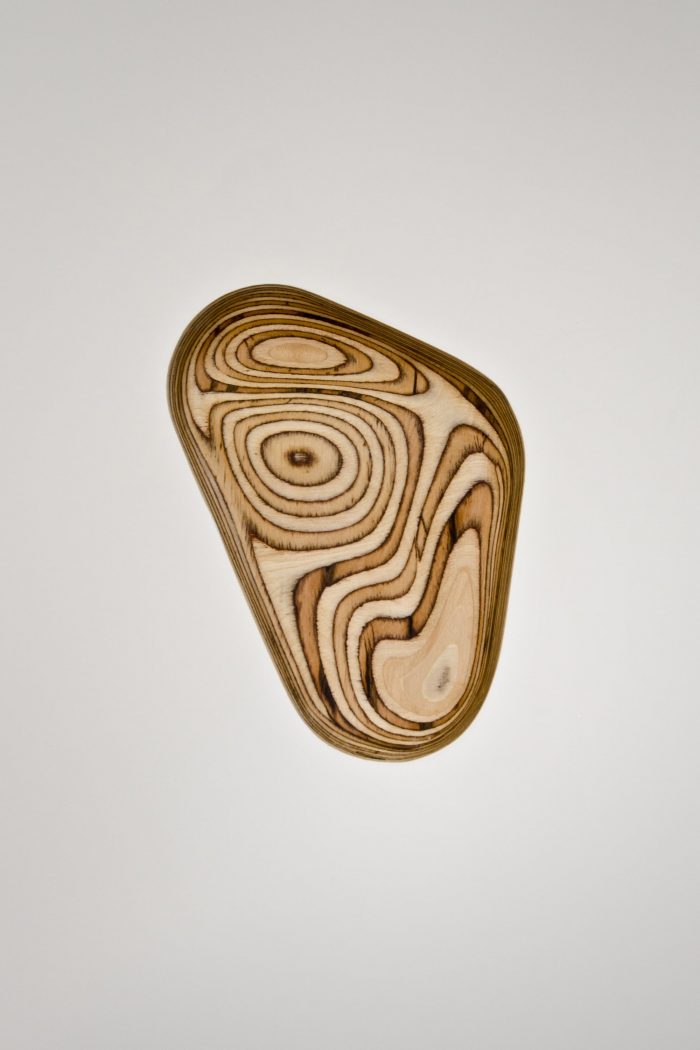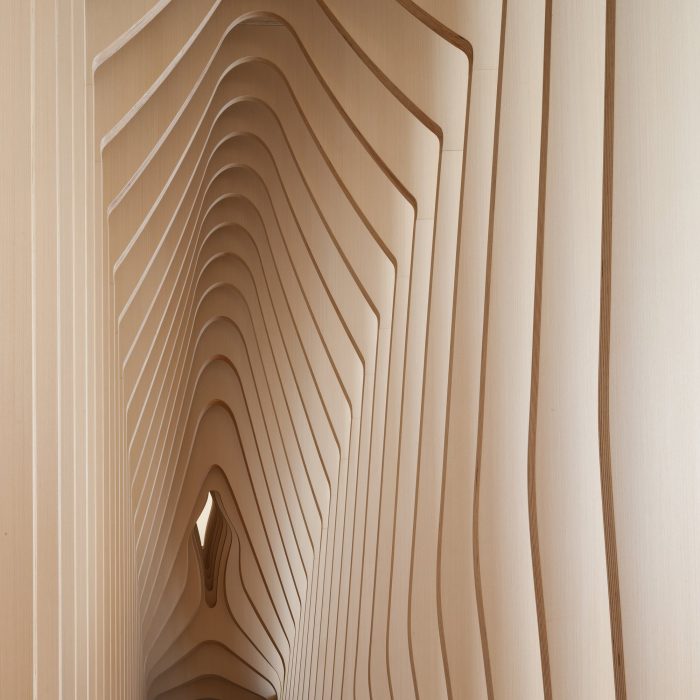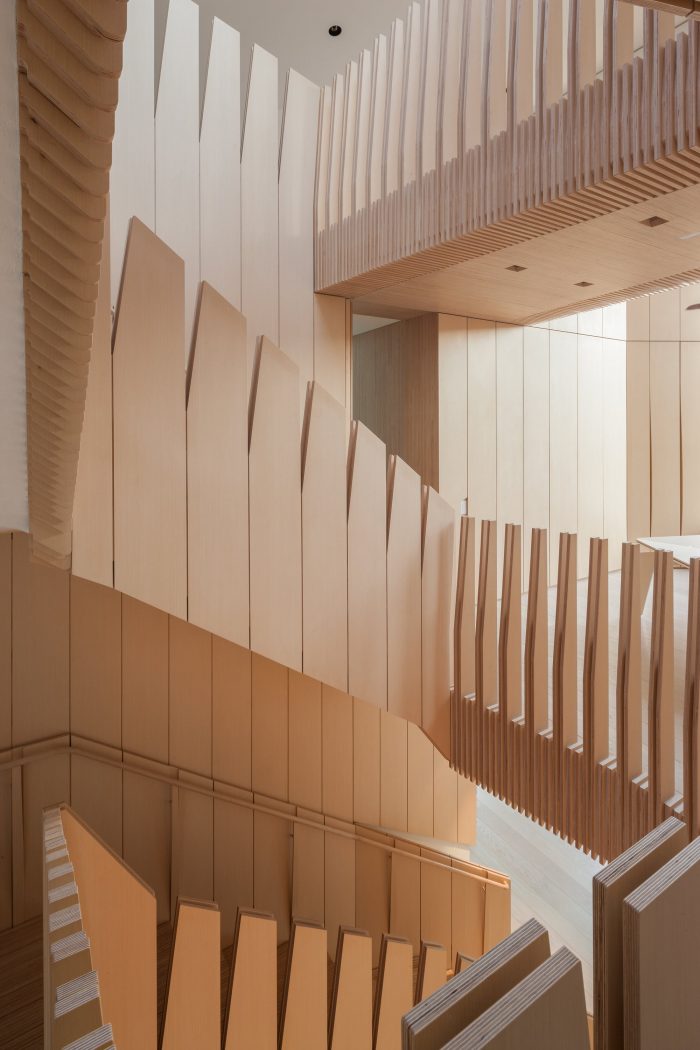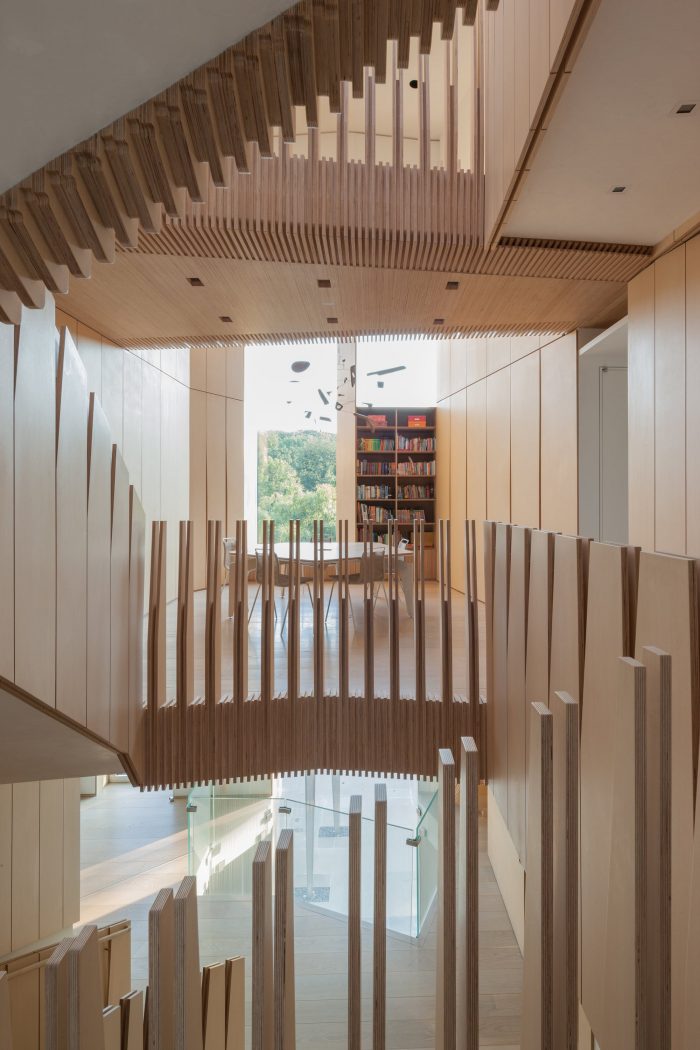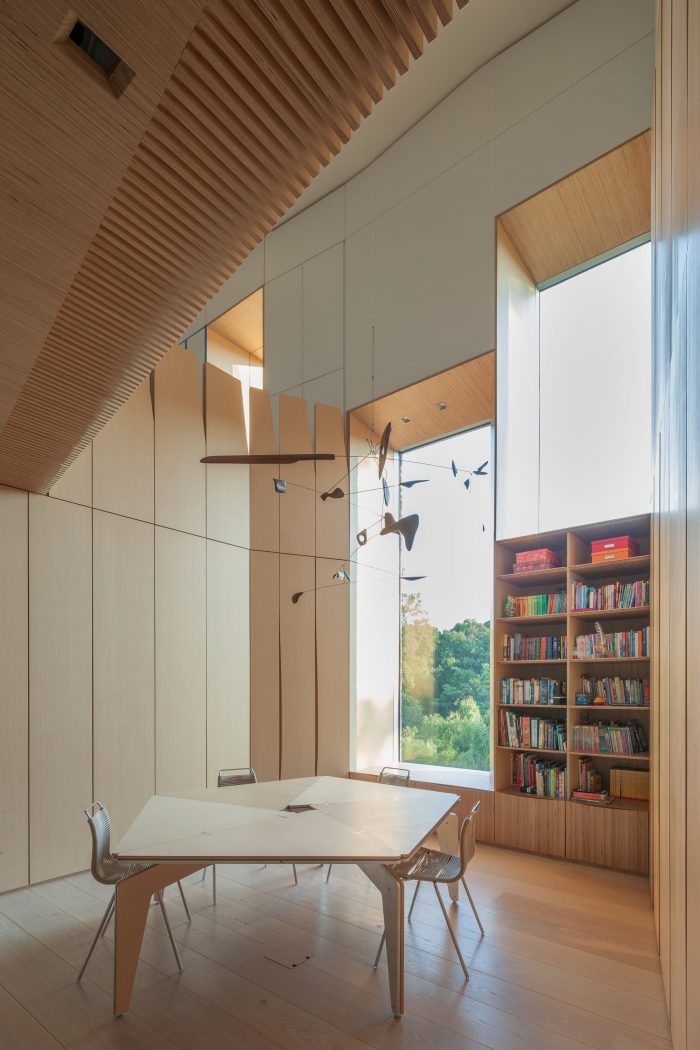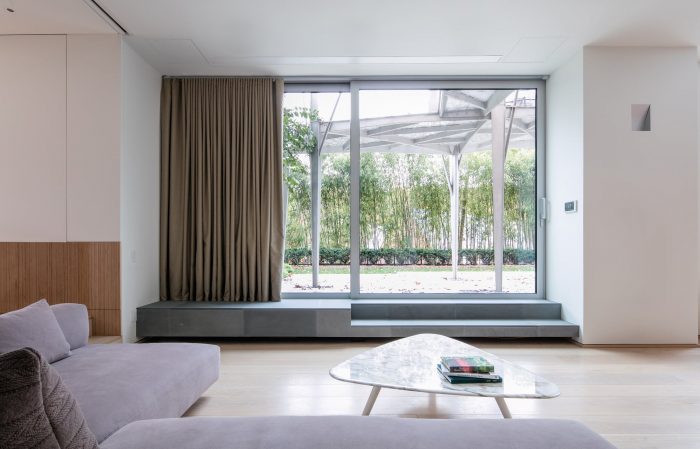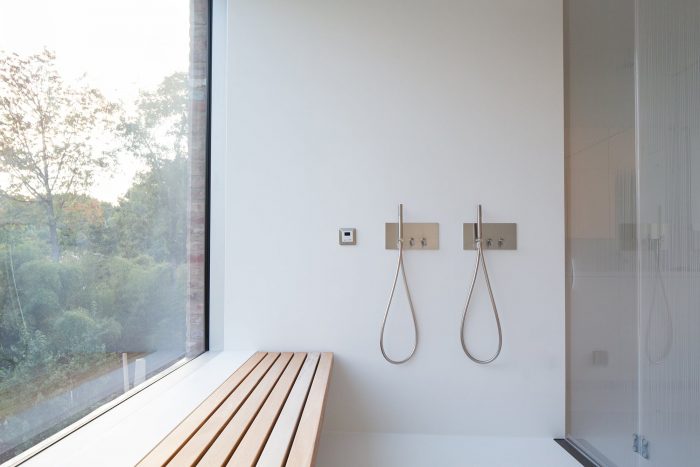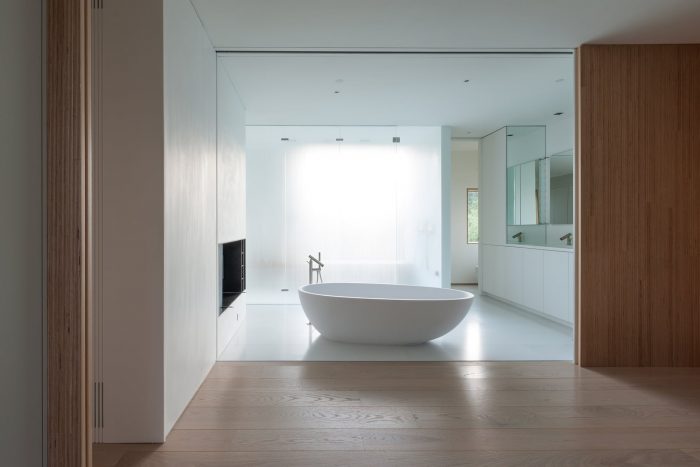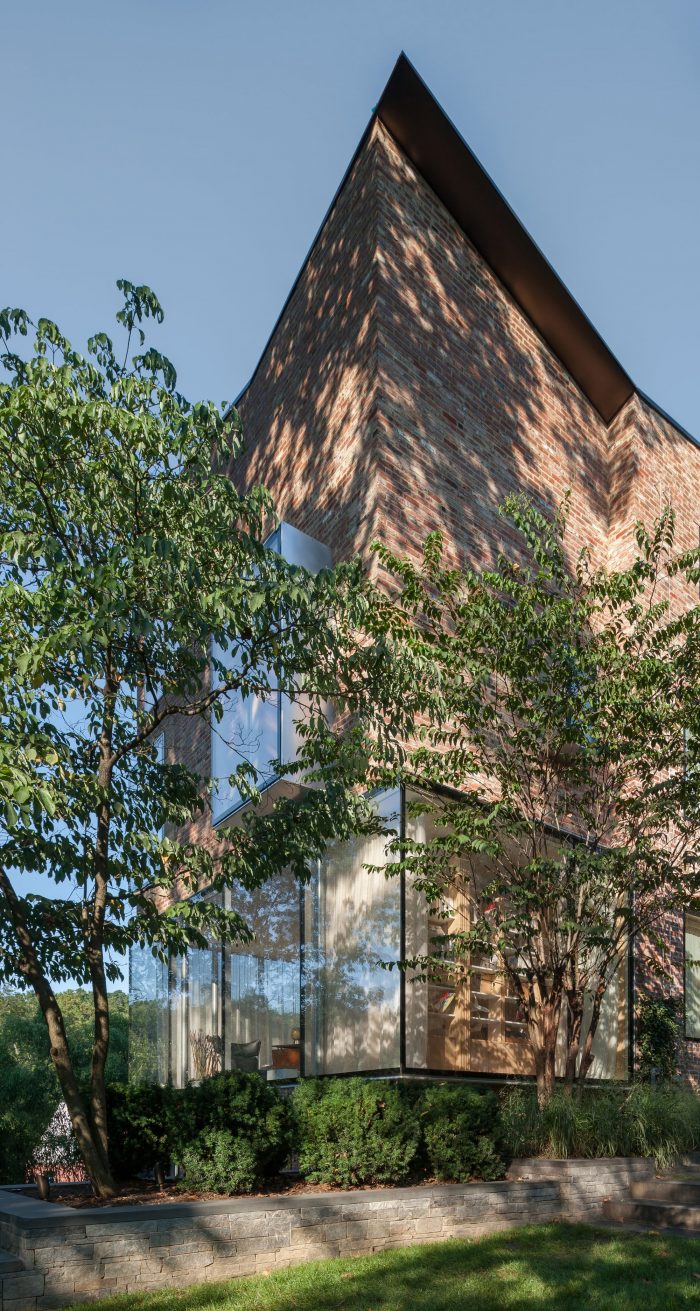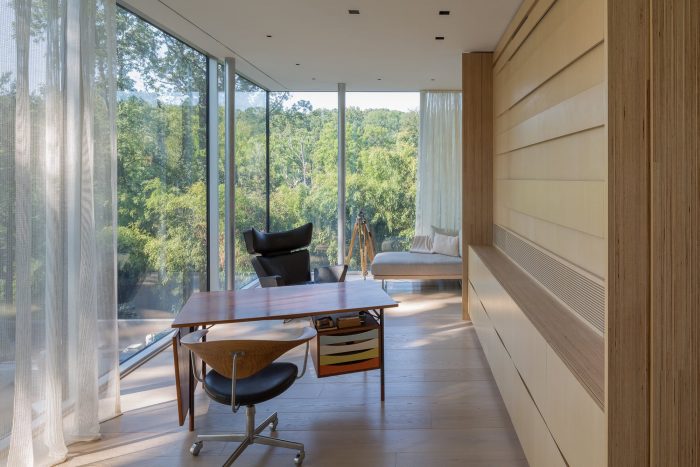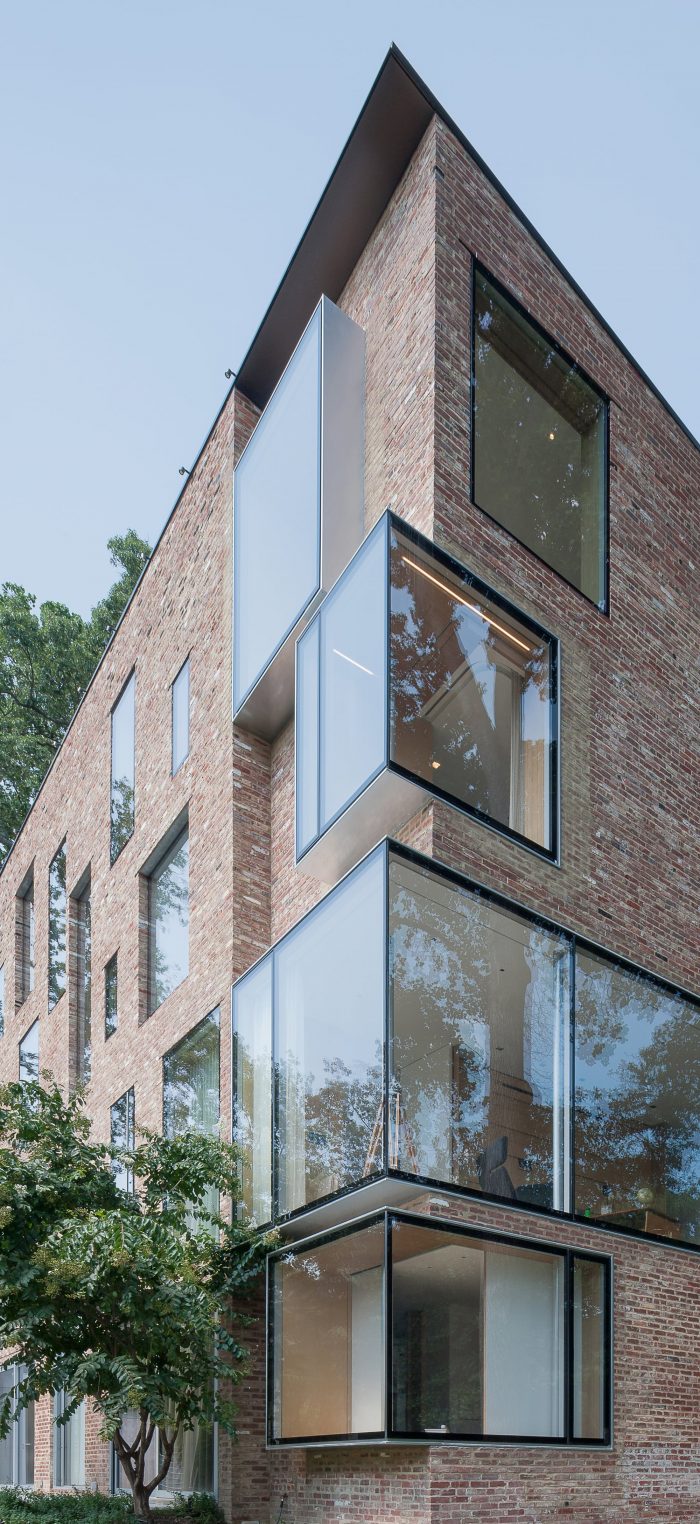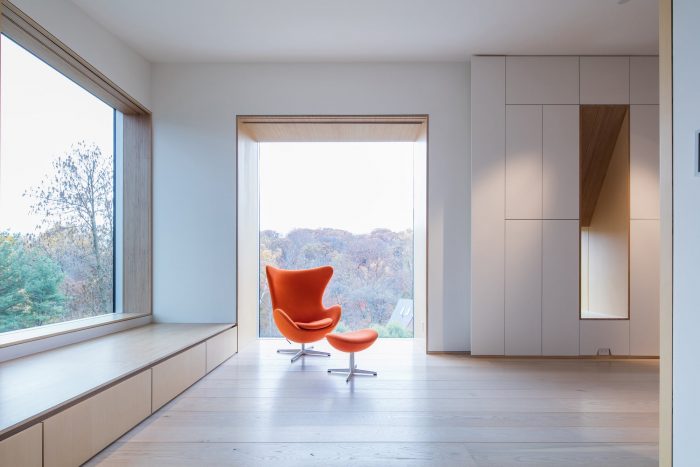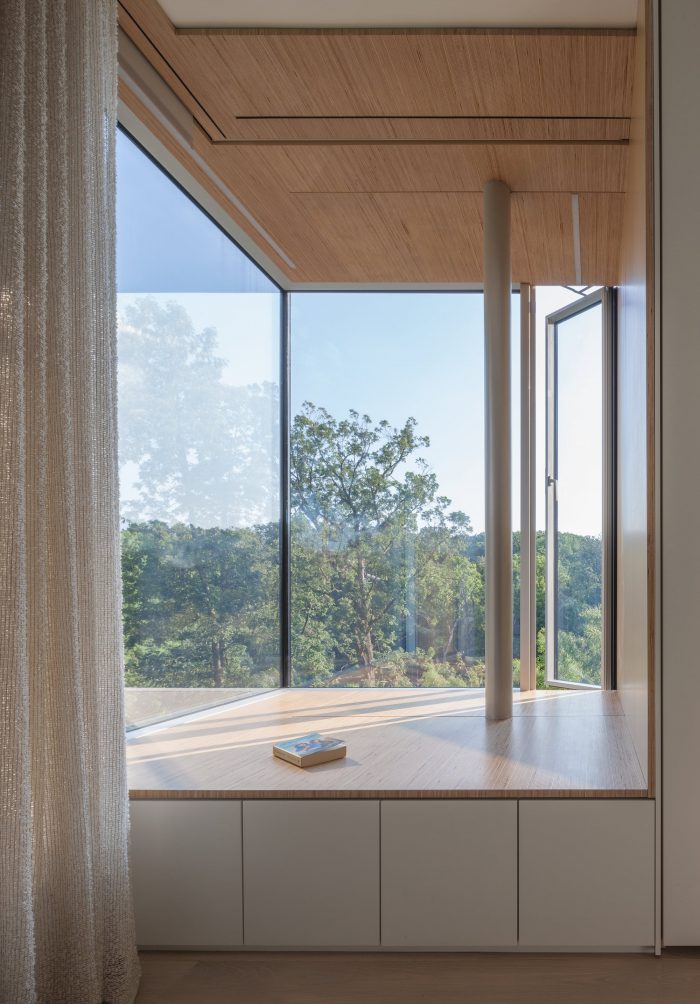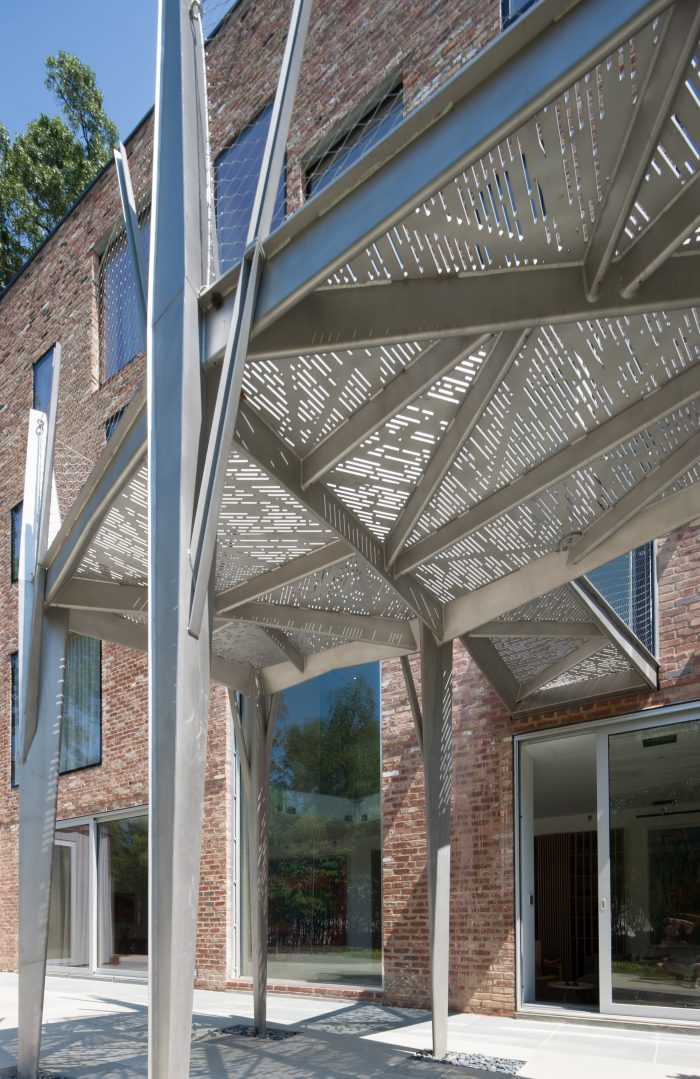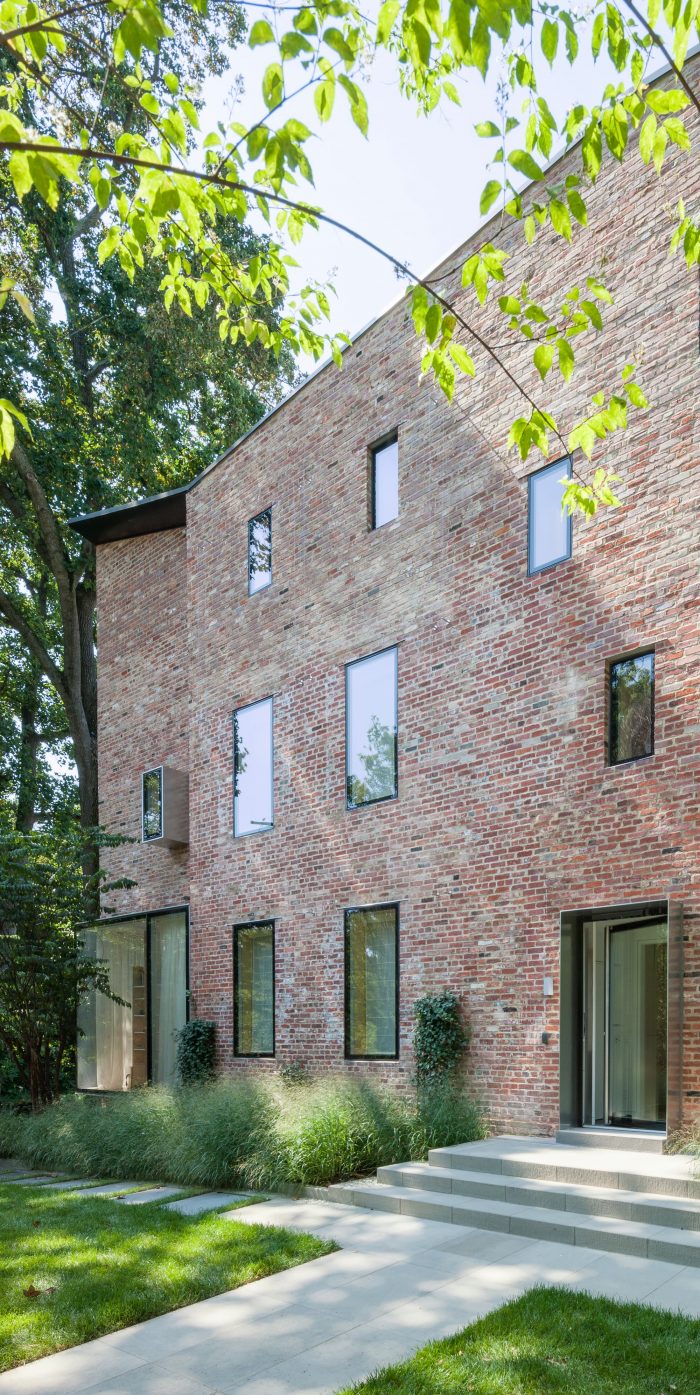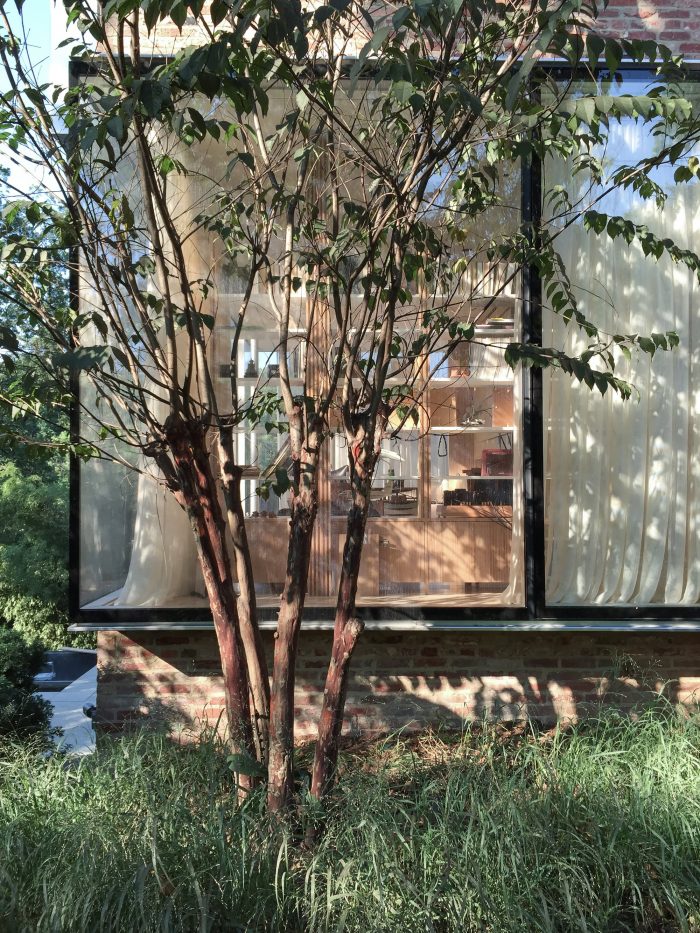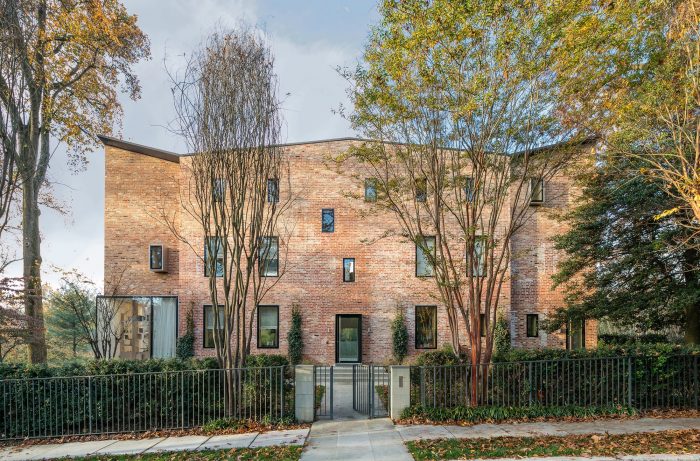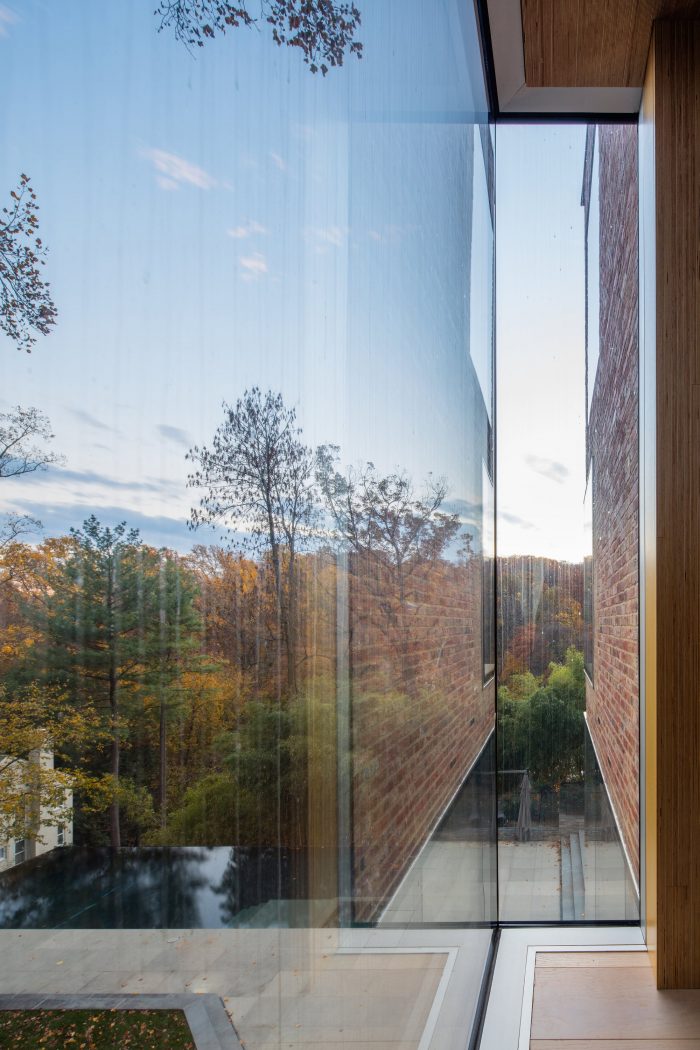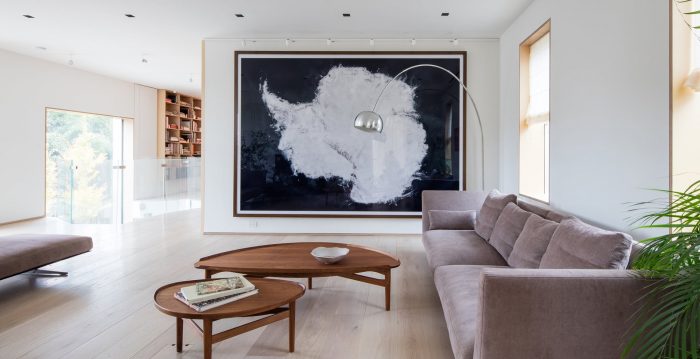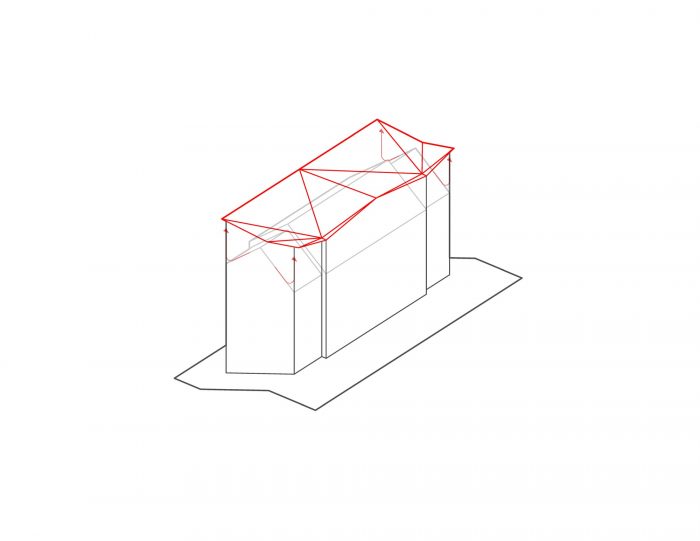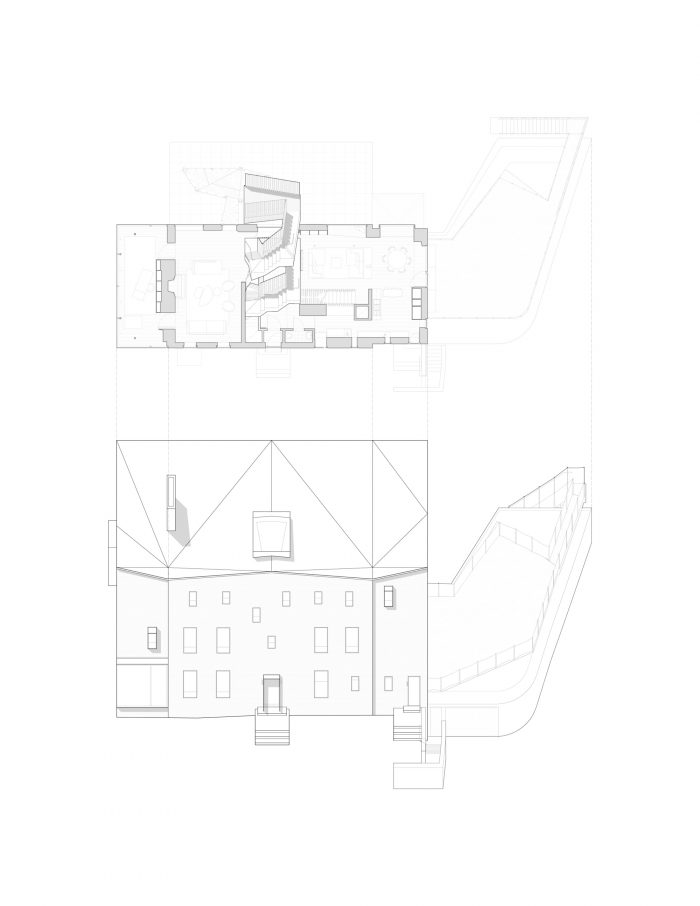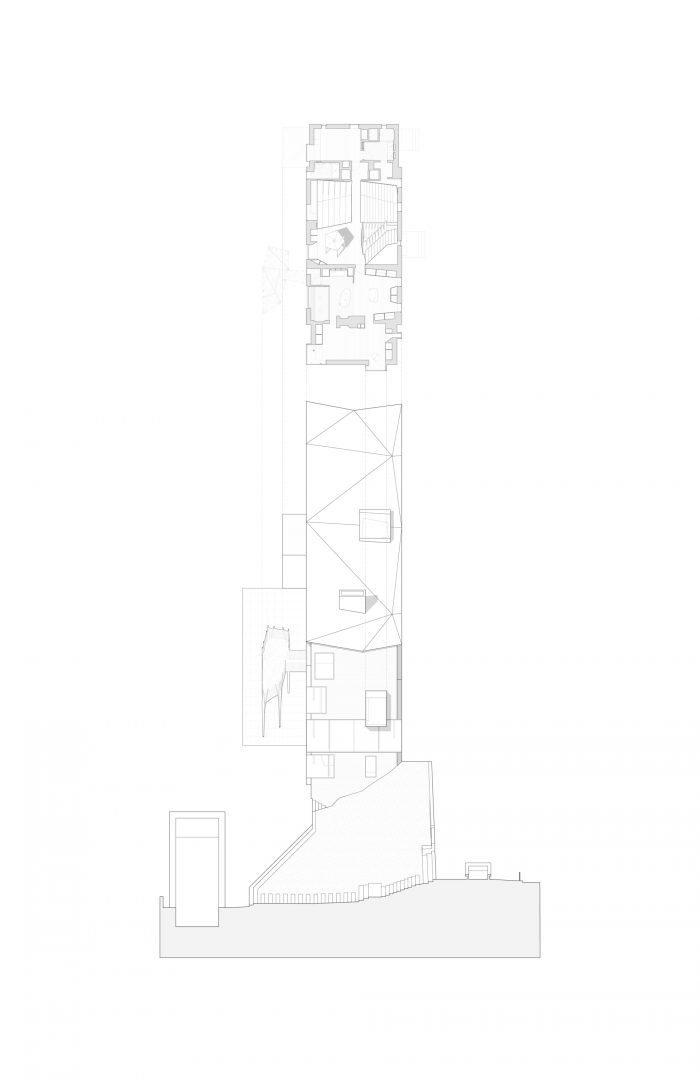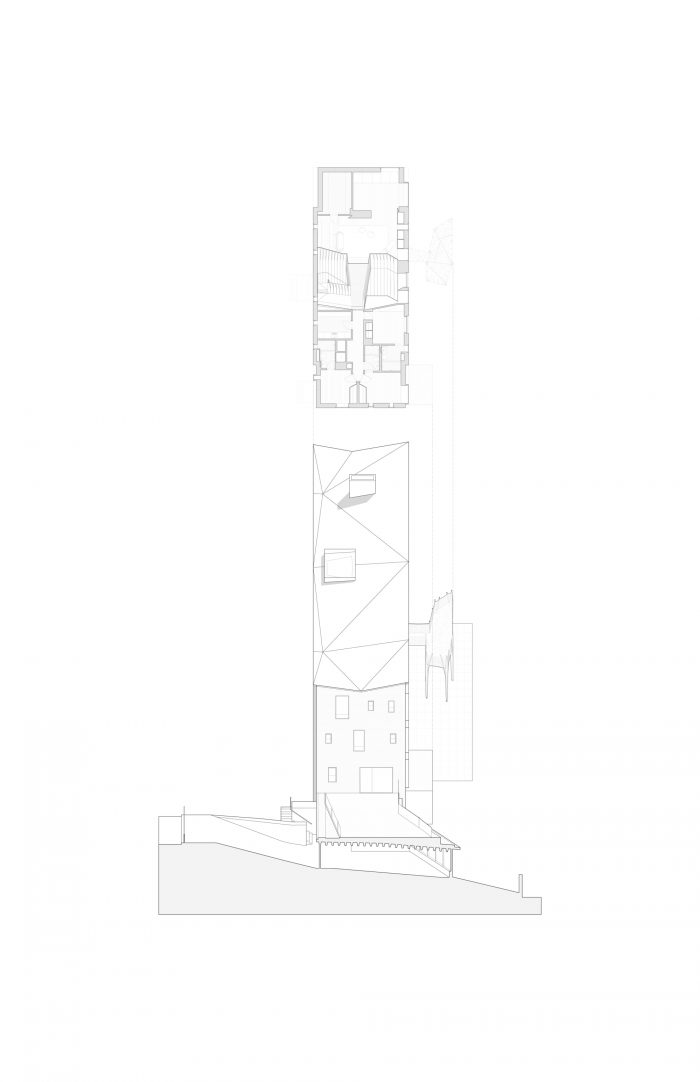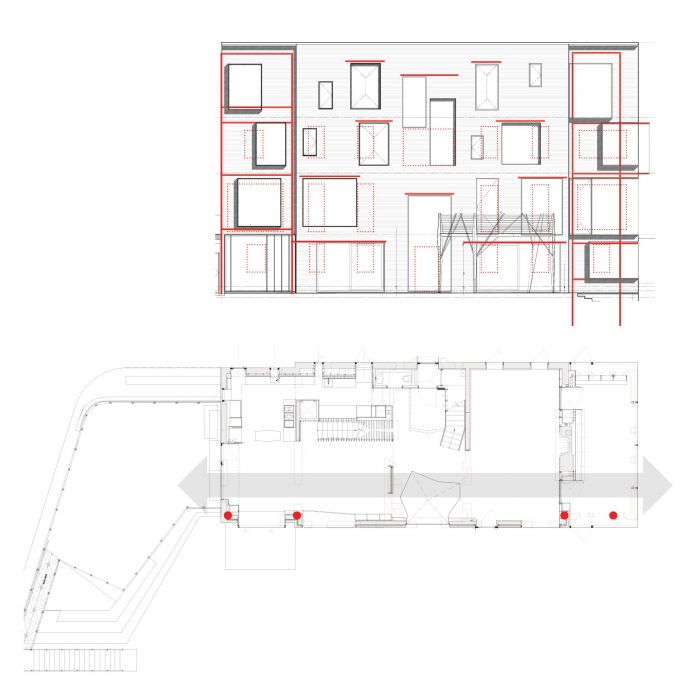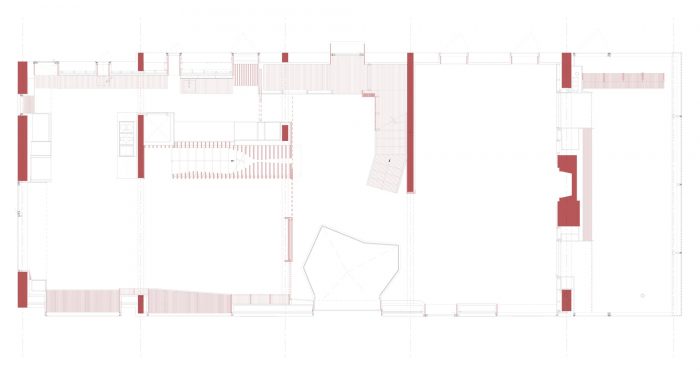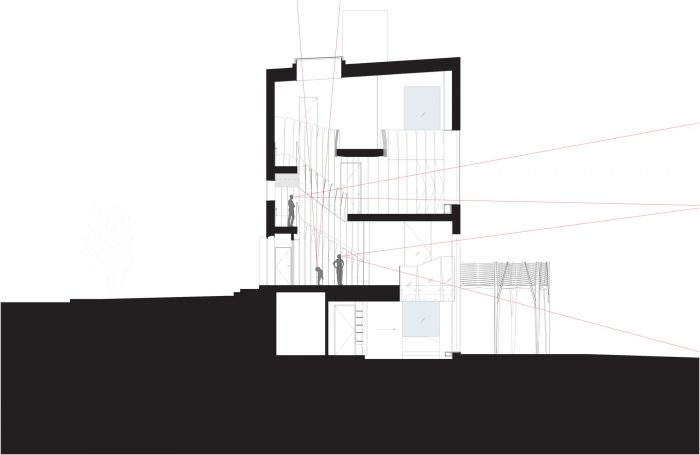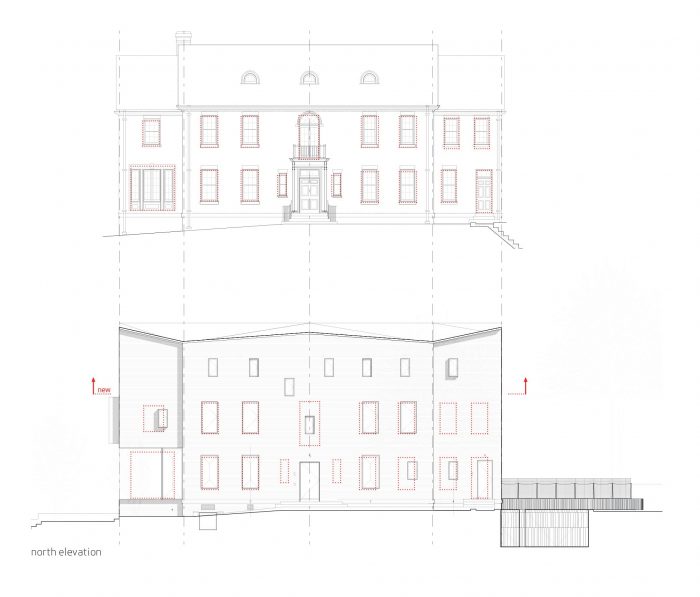岩溪之家是一个适应性再利用项目,它是一个20世纪20年代的砖结构,原来由两层楼组成,有一个机械地下室和阁楼。这种改造利用了现有结构的坚固性,抓住了阁楼和地下室,使房子的面积增加了一倍,同时将其功能扩展到景观中。
The Rock Creek House is an adaptive re-use project of a 1920’s brick structure that was originally composed of two floors, with a mechanical basement and attic. This adaptation leverages the robustness of the existing structure to capture the attic and basement to double the house’s size, while expanding its functions into the landscape.
虽然北部街道的立面保持相对完整–正式的、孤立的和组成的–但南部暴露在岩石溪的地方变得更加宽阔。通过扩大玻璃面积,在房间和它们各自的开孔之间建立更精确的关系,在南部建立了一个新的建筑秩序–更加非正式、开放和与自然对话。
While the northern street façade remains relatively intact –formal, insular, and composed– the southern exposure to Rock Creek is made more generous. By expanding the areas of glazing and establishing a more precise relationship between rooms and their respective apertures, a new architectural order is established on the south – more informal, open and in dialogue with nature.
由砖块组成的外围结构墙被重新组织,围绕着南北偏向,标志着北方正式和封闭的空间向南方非正式和暴露的空间的轴向过渡。与此相对应,内部结构框架呈东西走向,连接着砖砌的侧墙,而顶部的层压胶合板则为房屋的程序服务,与房屋的方向同步呈南北走向。所有的元素都被纳入这些层状条纹中:楼梯、壁橱、座椅、窗框,以及其他组件。从北方的实心外墙到南方的透明玻璃外墙,房屋的构造加强了这种转变。
The perimeter structural wall, composed of brick, is reorganized around a north-south bias to mark the axial transition of formal and closed spaces on the north, to the informal and exposed spaces of the south. In correspondence to this, internal structural framing runs east-west, connecting the brick party walls, while topped with a cladding of laminated plywood that serves the program of the house, running north-south in tandem with the orientation of the house. All elements are incorporated into these laminar striations: stairs, closets, seats, window frames, among other components. From a solid facade on the North to a transparent and glazed facade to the south, the tectonics of the house reinforces this transformation.
最突出的空间干预是引入了两个多高的空间。第一个空间将入口层向下连接到花园层,有一个新的客厅延伸到南部景观。第二个垂直空间将入口处与以前的阁楼连接起来,现在是一个以天窗为顶的游戏阁楼。通过这两个干预措施,曾经分层的储藏室、卧室、工作区和生活区变得无缝交织在一起。
The most salient spatial intervention is the introduction of two multi-height spaces. The first connects the entry level down to the garden level, with a new living room that extends to the southern landscape. The second vertical space connects the entry up to the former attic, now a play loft capped by a skylight. With these two interventions the once stratified realms of storage, bedrooms, work areas, and living areas become seamlessly intertwined.
Architects: NADAAA
Area : 10200 ft²
Year : 2015
Photographs :John Horner
Manufacturers : Agape, Buschfeld, CW Keller, Erik Jørgensen, Heath Ceramics, Kerasan, Ortal
Contractor : Abdo Development
Mechanical Engineer : Allied Consulting Engineering Services
Lighting : Hinson Design Group
Landscape Architecture : Landworks Studio
Structural Engineer : SGH
Principals : Nader Tehrani, Katherine Faulkner
Project Manager : Harry Lowd
Project Team : Sarah Dunbar, Remon Alberts, John Houser, Stephen Saude, Jonathan Palazzolo, Lisa Lostritto, Parke Macdowell, David Richmond, Dane Assmusen, Ghazal Abbasy-Asbagh, Mehdi Alibakhshian, Sina Mesdaghi, Tom Beresford, Dan Gallagher
Av And Integration : Bethesda Systems
Millwork : CW Keller Associates
City : Washington
Country : United States

